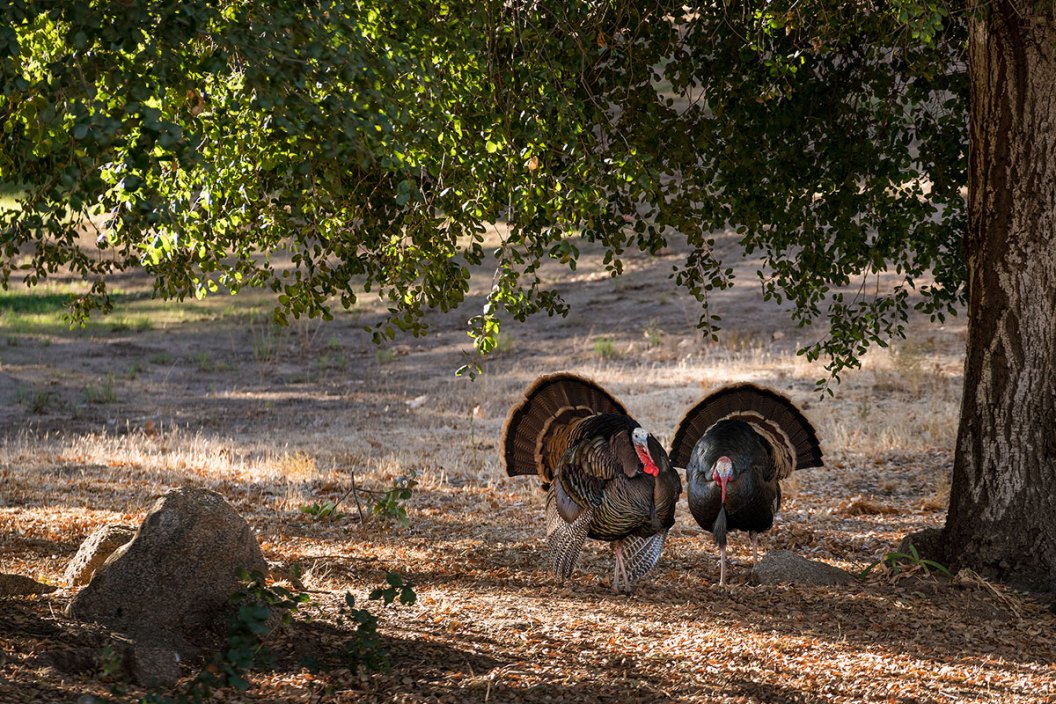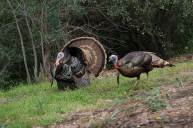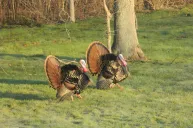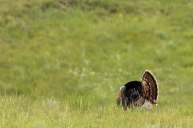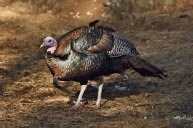Did you ever wonder, "What is it exactly that wild turkeys eat?" Well, the answer varies.
There are plenty of things that we know and love about wild turkeys, but we always seem to want to learn more. From the first time that we saw one of these big, struttin' birds up close we were excited and intrigued. The more facts we know, the more interested we become.
It may seem like a never ending quest for knowledge, but as long as wildlife biologists and land mangers keep studying them, we'll keep listening.
Interestingly enough, their eating habits seem to be at the forefront of our fascination. They are opportunistic omnivores, and some incredibly surprising things have shown up in a turkey's stomach from time to time.
Exceptions to the general rules will certainly occur, but we'll fill you in on the most common meals for turkeys, as well as a few other interesting tidbits.
What Do Wild Turkeys Eat?
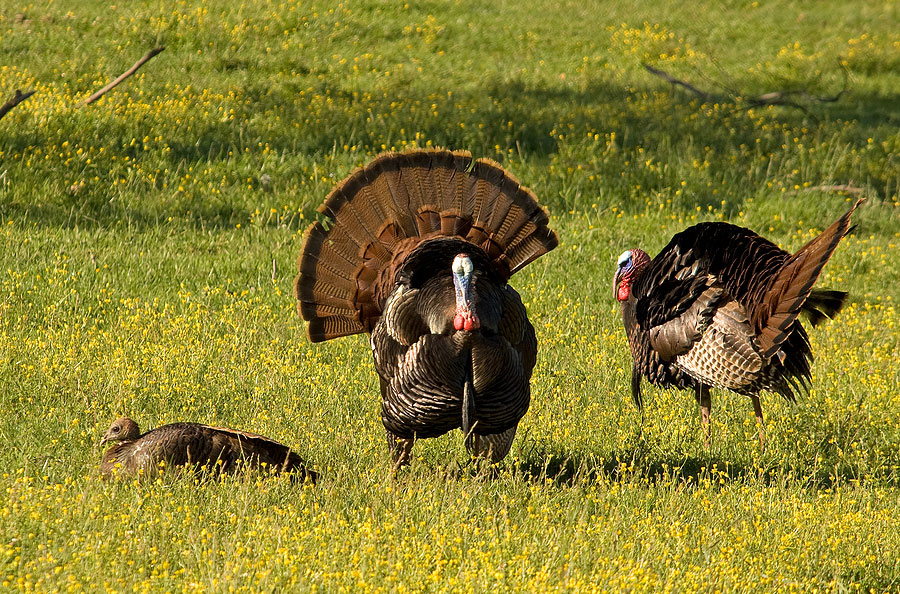
The list is long and varied, but turkeys are known to feed hardily on many natural food sources, a few of which may seem hard to believe.
They will dig amongst the leaf litter for nuts such as acorns and beechnuts, but also indulge in hickory nuts, pecans, and walnuts. Sometimes they're able to swallow them whole, other times they eat them after they've cracked open.
Berries, crabapples, wild grapes, and other fruits small enough in size and grown low enough to the ground are also enjoyed by turkeys in the wild.
Turkeys will also eat small invertebrates like caterpillars, grasshoppers, spiders, worms, slugs, and snails. Occasionally, and when found in abundance among their wildlife habitat, turkeys have been known to eat small reptiles and amphibians such as snakes, salamanders, and lizards.
Like most birds, they swallow small pebbles to form grit into their crops, which helps break down and digest the plant material they eat.
In harder times they will eat hemlock buds, ferns, club mosses, and burdock to sustain themselves, sometimes even digging up the bulbs of plants. Since wild turkeys can be considered backyard birds, it is not unusual to find them at bird feeders pecking away at birdseed including millet and cracked corn.
Turkeys will also eat the waste grain found in most farming communities just like deer and other wild animals. This quality forage provided by human activity has become a favorite among many wild turkeys.
More Gobbler Facts

The male turkey (or Tom) is the dominant member of the flock most of the year, especially in the spring. Gobblers tend to be the largest members of the group, and their proud strutting display during the spring breeding season sets them apart from the rest.
Probably their most prominent feature is their throaty, jumbled call affectionately known as the gobble. Hunters often employ the "shock gobble" response to locate turkeys, in which they use a crow call, owl call, or other loud and abrupt sound the startle a Tom and entice him to gobble loudly.
They tend to have an unfeathered red, white, and blue head with the colors intensifying as a male turkey gets excited. A mostly red-colored head on a strutting Tom indicates fear or submission, while the contrast of a red head on a non-strutting Tom shows the bird is feeling confident or aggressive.
When Tom turkeys vie for hens in the spring they can and will fight each other viciously, often kicking in an attempt to injure their rivals with the spurs that stick out from their lower legs.
Hen Turkeys
The moms of the turkey world, hens build a next on the ground where they can lay anywhere from 10-15 eggs in the spring.
During the fall, the motherly instinct takes on a new form as one hen usually takes charge of a flock. They lead them about for feeding and roosting purposes, emitting a very unique "kee-kee-run" call to gather them all.
Hens too can have a beard, although it is much less common. Many wildlife management departments across the nation list licenses as being for "one bearded turkey for legal harvest" because of this scenario.
Don't Forget the Poults
Juvenile wild turkeys can leave the nest almost immediately upon hatching, but the hens still care for the young into at least their first autumn.
While all adult wild turkeys seek out an elevated roost to sleep on each night, the youngest turkeys must remain covered and quiet on the ground.
The young birds will follow their mother and learn to scratch the ground in search of easy-to-procure insects, buds, and seeds.
Other Wild Turkey Behavior
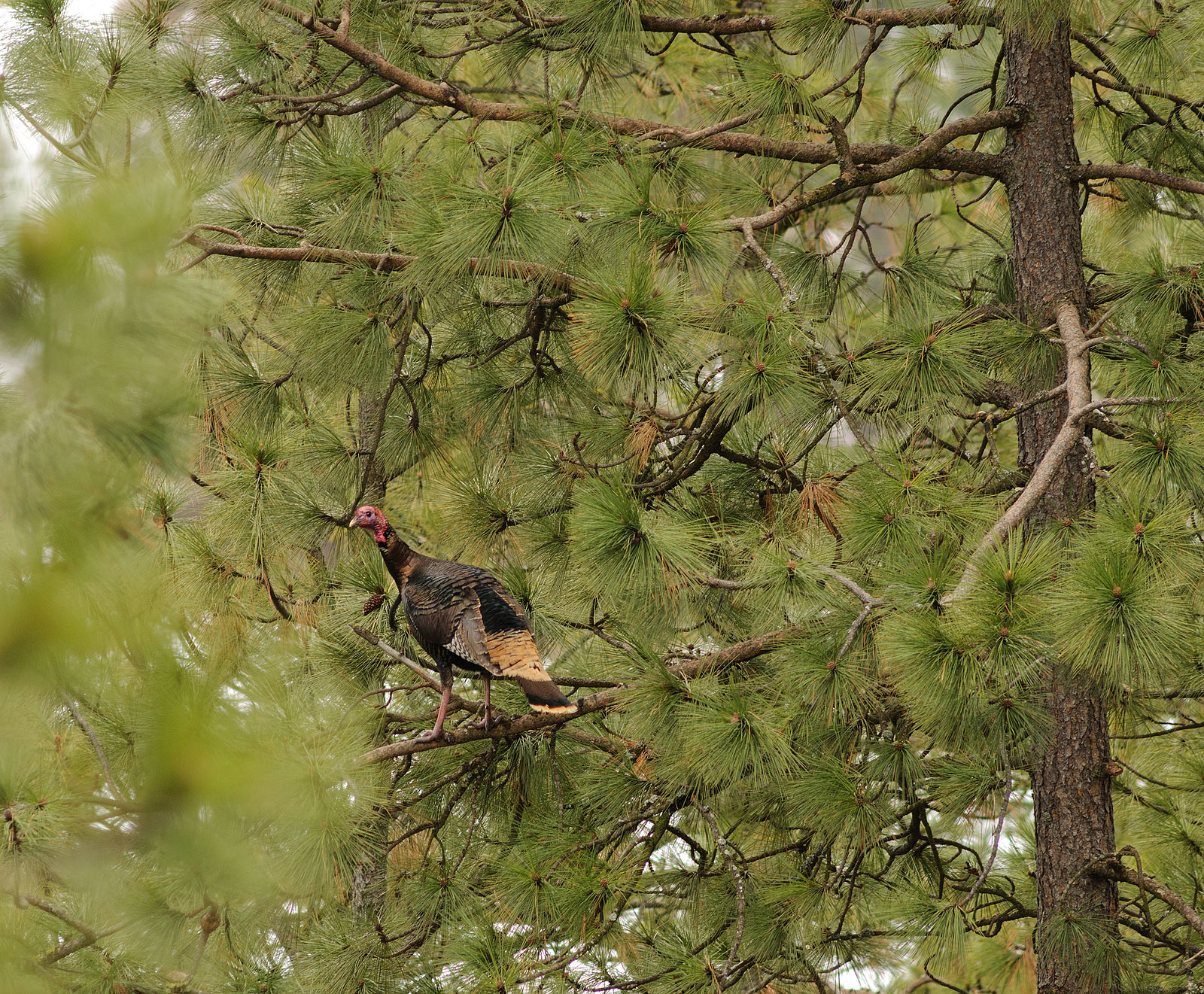
You didn't think those feathers and wings were just for fashion, did you? Yeah, even though many don't realize it, turkeys can fly.
For hunters, this isn't entirely a bad thing. Because they seek out a roost in the tops of favored trees each night, turkeys can be patterned to distinguish their whereabouts the next day.
Continued Turkey Intrigue
There are five distinct subspecies of wild turkeys that we know, love, and hunt including the Eastern, Osceola, Rio Grande, Merriam's, and Goulds. Most of these have about 5,500 feathers including about 18 on their tails.
Turkeys can run quite fast, and thanks to their excellent eyesight (they can see in color), they can live to be about five years of age. That is, unless they're caught by a great horned owl, coyote, eagle, bobcat, or shot by a hunter.
Deforestation of their habitats in the early part of the century nearly wiped out populations of wild turkeys in areas where this was happening, but thanks to restoration efforts—particularly by the hunting community—wild turkey populations not only survived, but have thrived across the nation.
The wild turkey of North America is one of our favorite game animals. Maybe the greatest reason why is because they pique our interest with their behavior, eating habits, and life cycle.
Looking for a little more or even hot lunch for your hunting blind? Follow my webpage, or on Facebook and YouTube.
NEXT: 5 BEST TURKEY HUNTING STATES OVER THE NEXT 5 YEARS
WATCH
